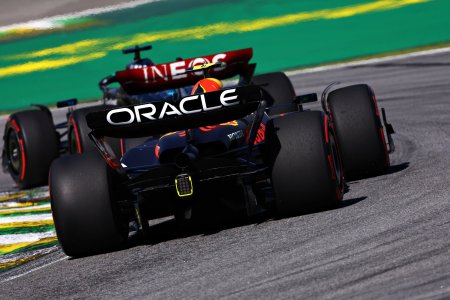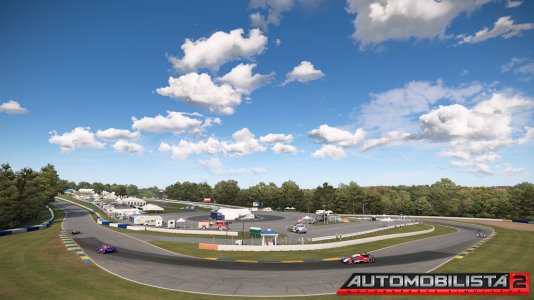Good lord there's some nonsense here. Wind turbines require forging and transportation, unlike a natural gas power plant I guess, where you plant the seed and grow a power plant?
Edit, I'm putting my sources at the start of this post so people know I'm not just pulling this stuff out my arse.
Source for my entire post: I work in the energy industry, as part of a large training provider. I create training simulators for oil rigs, power plants, ships and wind turbine farms for training engineers on how to use their own equipment, and how to deal with major emergencies and incidents. I am also an engineering student, studying energy, electricity and...sustainability.
Furthermore, when the wind is blowing hard and the blades are turning quickly, they send power spikes to the nearest power station and the extra energy is bled off. This results in the blades needing to be feathered so that they stop turning altogether. Which is why in certain parts of the country you will see an entire grid of these windmills doing absolutely nothing for hours on end.
Wind turbines are fitted with brakes which slow the blades down, generally when the wind speed is greater than 20 m/s. Most turbines (certainly the Vesta V90s that I'm most familiar with) do an emergency stop over 25 m/s. The turbines also do not produce power "spikes", and they do not deliver electricity to "the nearest power station". They have local substations which do all of the necessary power management. Even the offshore turbines have substations mounted on monopiles. Whilst they can produce too much power on a windy day (which is why some are not always running), they are not producing a spike. Basic physics with momentum and inertia just won't allow these sudden spikes. You can tell just by looking at them as well - they don't suddenly change speed on gusts of wind. If the blades aren't changing speed, then it isn't producing more power, and therefore not spiking.
If you're complaining that they have to shut the turbines down because they produce too much power, then that's a bit of a silly argument. You can't argue that these things are not any good, and then say that they are so good they need to shut them down.
There is 10 times the amount of energy in a liter of gasoline as compared to the same capacity of Electric.
This is a nonsensical statement. There is no such thing as a litre of electricity. So how can you possibly measure that? There is 9.7 kWh of energy in a litre of petrol.
Furthermore, an electric battery can either put out more power and go for a much shorter time or go with less power output and drive longer. This limitation is almost non-existent comparatively with petrol/diesel.
This is incorrect. A more powerful internal combustion engine will return less MPG. It will "put out more power", but "go for a much shorter time". It is not non-existent in a petrol car, otherwise a Ford Mustang V8 would return 80 mpg. (Spoiler alert: It does not).
As I have spent some years in the auto industry me and my colleagues call electric cars coal cars. Because that's what they are. For as much power as you put into the battery, that's how much coal is needed to be burned to produce it. Let's not kid ourselves.
That argument only works if you use 100% coal to power the grid, which we do not. However even if you use 100% hydrocarbon fuel to power your grid, you still output 20-40% less emissions. A petrol engine tends to only be around 20% thermal efficiency. A rustine gas turbine generator is around 60%. (Diesel engine comes in at around 40). So even if you burned oil and gas to produce ALL of your power (which we don't), you still have a net gain of 20-40%. And this is before you fact in it takes 6 kWh to refine a single gallon of petrol, not including transportation and infrastructure costs.
Diesel/petrol = far more efficient.
See above, it is not. Even if you ignore the infrastructure requires, it is not more efficient.
Turbines. Not windmills.
cost millions of dollars each to build.
An oil and gas drilling platform (the cheapest of the lot of them, as they do not have any production equipment onboard) costs around $650m. A single wind turbine costs around $3-4m (they are about 1.5m per MW). Wind turbines are expensive. Oil rigs are MUCH more expensive.
Then they are hauled on...wait for it...huge trucks that burn copious amounts of diesel fuel.
Pulled by the same cab that brings petrol to a petrol station. And that petrol station gets a weekly top up. The turbine makes one trip.
Further, these devices need maintenance and parts replacement which can only be done by enormous cranes which burn...you guessed it, more diesel.
I don't know if you've ever seen an oil rig, but most have a lot of replacement parts, which are shipped out by boat (using diesel), and then lifted on using a crane (using diesel), and they need to fly people there (using Jet A1 fuel). Oil rigs tend to have multiple cranes as well. Usually 2 primary ones and a third laydown crane.
And of course, since you mentioned it, I'll add that all during this process thousands of birds are killed each year by flying through the spinning blades. But hey, we're saving the planet here right?
I don't need to google for the Gulf of Mexico, right?
Have a look at what Solar City are doing. Building them in America. By Americans. Providing American jobs.
You will never see a building/home/corporation that can power off solar entirely as they simply don't make enough power.
Actually this is completely false. The average roof area of an American house (American! Not European, they have smaller roof areas), is large enough to power the home for the majority of the year. California actually relies on residents putting power back into the grid in the summer due to the amount of people running Air Conditioning and the utility companies being unable to cope with the demand. That's right - solar power keeps the lights on baby.
The more sunlight they absorb, the quicker they wear out
Not sure you're using the word "wear" correctly there. You will find no wear on a solar panel. All forms of energy capture suffer from degradation. Oil rigs are routinely given massive upgrades due to advancements in technology and wear and tear. Want to talk about those boats again?
Each one being sprayed/wiped off etc.
Solar creates jobs then? What a horrible system.
----
You seem to be under the impression that solar and wind are not steps forward because they do not fix 100% of the problems 100% of the time, which is of course a completely delusional stance to take. In fact, they provide steps forward, even if they do not solve the problems completely.
However if we 100% completely IGNORE the environment right now, let's just talk about fuel sources. Oil and gas will run out. I love oil and gas. It powers awesome V12 cars. It allowed us to go through the industrial revolution. It's a great source of energy. But it is not sustainable. By that definition, it makes it...unsustainable. So why is it a bad thing that we move to looking at alternative ways of capturing energy? Isn't it good that we do this now, rather than when it is actually a serious problem and we go through an energy crisis? Shouldn't we be looking forward, solving problems before they happen?
Or shall we just stick our heads in the sand...or oil wells...and pretend the current situation is sustainable?
Source for my entire post: I work in the energy industry, as part of a large training provider. I create training simulators for oil rigs, power plants, ships and wind turbine farms for training engineers on how to use their own equipment, and how to deal with major emergencies and incidents. I am also an engineering student, studying energy, electricity and...sustainability.
Edit 2: I like my motorsport petrol powered. I do not like Formula E. I think it lacks noise and fun. However this preference for a petrol powered motorsport does mean I will deny physics and join the flat earth society.












